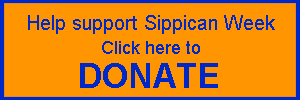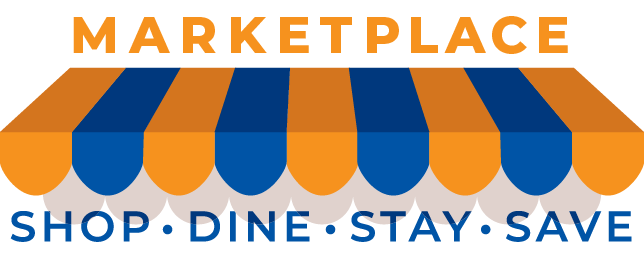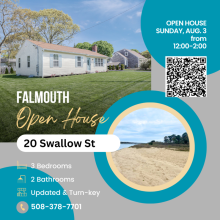When it comes to bullying, harassment help is just one stall away at ORR
Sometimes when students are experiencing an unpleasant situation at school or at home they'll seek a place to get away. For many, that means the bathroom stalls. School administrators think that is the perfect place to tell them how to get help.
Over the summer "Are You Okay?' posters with QR codes to wave cell phones over and get information were placed in all student and staff bathrooms and other public places to help those who feel bullied or harassed in any way get the resources they need.
"The objective was to reach kids who may not know that there are services within our schools where they can get help if they are experiencing harassment, abuse or bullying," Dr. Elise Frangos, Assistant Superintendent for Curriculum, Instruction and Assessment for the Old Rochester Regional School District, said. "Sometimes students or staff may not even know what that is where they are experiencing discomfort."
She said the poster was designed by high school students who used their graphic and technology skills to reach out their peers in a relatable way.
"If you look at the PSA there are some provocative questions that will hopefully trigger an understanding about what that is," she said. "One of the things that came out of our strategic planning process is that some kids at the high school didn't know that we have a social worker because they just weren't aware of that service. We're really fortunate to now have two social workers. We want kids to know there are resources and that they are not alone.
Frangos said the questions on the poster are meant to make kids - and adults - understand what abuse is.
"The most provocative question is, 'Are you Okay?," Frangos noted. "Whether that's for a staff member or a student the questions are meant to generate thinking about powerful people in their lives, whether its a partner, a coach, a teacher, a parent, anybody in their life that may be making them feel uncomfortable. There are some trigger questions to think about what they are experiencing, reflect on it, and then they'll know what services there are."
Getting students to know what's available to them and there are people who can help is a hurdle that can be overcome.
"The services they have are our school resource officer, guidance counselors, social workers. They will know exactly what extension, and location those people are at. They will also know what services are available in the wider community should they want to check in anonymously with any of those services."
"It's the ultimate project-based learning, in that seniors and juniors at our high school really wanted to assist their peers who they feel are sometimes going underground and not understanding what they are experiencing, and sometimes lack the assertiveness skills to get the help they need," Frangos said.
Frangos said the project originated by she, Mattapoisett Public health Nurse Amanda Stone, school media coordinator Erin Bednarcyzk, and students, who met during 'Bulldog Block', which is an enrichment time for students and teachers.
She said the idea for the poster campaign arose from the tritown community itself.
"The need really came from the Health Tritown Coalition, which is kinda the umbrella group for this, revealed a couple of years ago through a youth risk behavior survey.
"We had a very robust response from students," Frangos said. "Close to 2,000 students at the junior high and high school told us there were some areas of need. One of those areas of need is relational violence that was above the national average. What that means is that sometimes people were experiencing unwanted sexual advances. For the past couple of years, we worked on how to assist students who may be experiencing kind of abuse but not telling us about.
"What we want students to do, if they are experiencing something to say something and getthe help they really need," Frangos said.
She said the district will soon begin an update of that survey to stay current.
"That data is now old so we are going to do that survey once again, Frangos said. "It's called the 'Youth Risk Behavior Survey.' We will do it for this fall. It's targeted for November. We want have better data on some of the hot topics, such as suicidation, depression, and relational violence."
Frangos believe these posters are the way to reach students who might never come forward on their own.
"Students have told us that they were afraid to come forward even though we have very, very good staff, teh assistant superintendent said. "They thought it may impact their admission to college. This is really a lack of understanding about trauma. If they felt damaged or they were going through this alone, they didn't want to disclose it. We're trying to encourage any one experiencing abuse or trauma to come forward.
"Sometimes the victim is further victimized by an unwillingness to speak up," Frangos noted. "We want every victim to speak up. So (poster boards) they are installed in every restroom, gender neutral restrooms, nurses offices, men's and women's staff restrooms. Every sector of the school has them installed in the stalls, above the urinals, near the mirrors."
Frangos said its vitally important to stop abusive behavior as early as possible because of its lasting effects on a person's life.
"The effects of this kind of trauma are life-long," she noted. "They impact career dreams. They impact one's education, and ability to learn. Nobody should take a pass on this. There should be no tolerance in our society or in any organization for aggressive behavior toward others."
"One thing I'm really please about is I shared this yesterday (Aug. 21,) at the Healthy Tritown Coalition meeting, and the larger community was really pleased that theses are installed,"Frangos said. "We're going to monitor the number of clicks on it through the QR code. The QR code is a technological tool that allows the student to use his or her cell phone to capture all the resources, like the Women's Center and all the anonymous hotlines from their cell phones. We now know that 50 percent of kids are carrying their cell phones, Frangos said. " These PSAs will not have to be taken off the wall so that even at night and off campus, they will have these resources in their hand at all times."
There's a possibility that something modified for young children will be put in the elementary schools, as well, she said.
"I was so please that elementary principals have approached me and said they would like very kid-friendly, very developmentally friendly PSAs like this installed intheir restrooms,'"Frangos said.
"There are some people in the community, people of faith, who would like this PSA modified so that it could be placed in their organization because they know of people who are particpants in their religious communities who may be expeirencing these kinds of challenged as well.
"Its very near and dear to my heart. I had one daughter who experienced this and needed to go to the police for it. That was a decade ago," Frangos said. "What's terrific about this is a coming together of kids and adults to solve a problem.
"I really want to praise the kids who used their graphic knowledge and their technology knowledge to put this together. It's project-based learning which is the new direction of our strategic plan and if we can help others through projects that serve the community, that's great."














